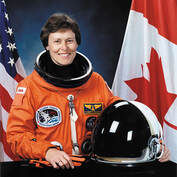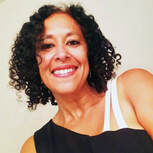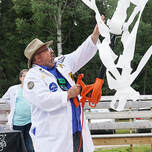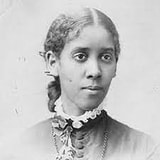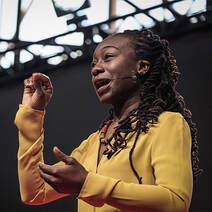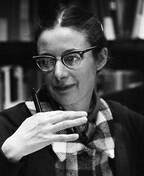Feature ~ People of Science
Awesome STEM Advocates ~ TAWBAS's Picks
|
Dr. Roberta Bondar
Dr. Roberta Bondar - astronaut, neurologist, physician, educator, photographer. She was the first Canadian woman and second Canadian in space when she flew aboard the space shuttle Discovery in 1992. A doctor specializing in the nervous system, she is a pioneer in space medicine research. Bondar is also an renowned nature photographer. She established The Roberta Bondar Foundation to educate people about environmental protection through art, and she currently serves as one of the organization’s directors. |
Nicole Mortillaro
Nicole has an avid interest in all things science. As an amateur astronomer, Nicole can be found looking up at the night sky appreciating the marvels of our universe. She is the editor of the Journal of the Royal Astronomical Society of Canada and the author of several books. In her latest book, Nicole draws on her experience as a woman in STEM to highlight the incredible odds scientists faced chasing down discoveries and the ways in which sexism and racism, among other barriers, still affect women scientists to this day. |
Scott Lough ~ Professor Quark
Prof Quark is a life-time advocate of STEM and his Circus of Science is a feature attraction of TAWBAS's annual Dark Sky Festival. Through his super-energized performance, the Circus is an entertaining program for the younger participants as well as to young-at-heart. Kids and adults alike unwittingly learn basic science while being gleefully entertained. Past activities have included: Cooking a Comet, Toilet Paper Aurora and, 2001 - A Space Bucket Odyssey. |
Notable Canadian Women of Science
|
Sophia B Jones
Sophie Bethena Jones, M.D., (May 16, 1857 - Sep 8, 1932), was born in Chatham, Ontario. She became a physician and the first Black faculty member at Spelman College (Atlanta, GA) in 1885. She also established the College's nurseing training course before going on to practice medicine in St. Louis, Philadelphia and Kansas City. Jones' path to Spelman began at the University of Toronto. Discouraged by the limited medical education offered female students there, she packed her bags and enrolled in the University of Michigan's medical school. She graduated in 1885 and became the institution's first Black female doctor. Jones had a passion for advancing public health and achieving health equity in the post-Civil War era. In 1913, she published a retrospective article titled, “Fifty Years of Negro Public Health.” One of the most cited quotes from Dr. Jones’ articles carries a powerful message that is still resonates today. For more of Sophia's story...
Spelman College |
Eugenia Duodu Addy
Dr. Eugenia Duodu is a scientist, speaker, community builder, and an advocate of STEM (science, technology, engineering and math). She earned an Honours BSc in Chemistry and Biology and a PhD in Chemistry at the University of Toronto. Her research focused on the development of molecular detection tools for diseases such as cancer and Alzheimer’s. Duoda-Addy is a long-standing community advocate. She developed and led numerous youth initiatives in low-income communities. Today, she is the CEO of Visions of Science Network for Learning, a charitable organization that empowers youth from low-income communities through meaningful engagement in STEM. (www.vosnl.org) She regularly speaks at STEM education and community development events. As a TEDx speaker, she has been featured in numerous publications. Her goal is to help make a long-lasting positive impact in communities through STEM engagement and, in turn, enable youth to reach their potential. |
Ann Underhill
Ann Underhill was one of the first Canadian women to pursue a career in astrophysics. She was born on June 12, 1920, in Vancouver, BC. Her life's work has been on the hottest stars, and on the nature and properties of winds from young and old stars. She is one of a rare few who ever combined five decades of fundamental astronomical innovations to understand stars. In over 200 publications Underhill has shown how stars free themselves of the cloak of material which shrouds them as they are born, and how their winds affect star's evolution. Underhill has been a visiting lecturer at Harvard and held a major research post at NASA where she helped to develop satellites that observe astronomical objects. Ann Underhill passed away at the age of 83 in Vancouver, BC on July 3, 2003. |

